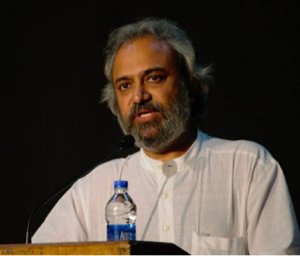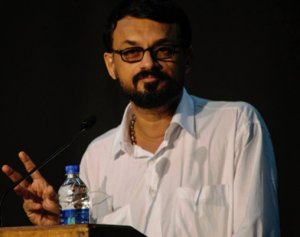
|   |

|   |
Editors and the Edited - Veejay Sai e-mail: vs.veejaysai@gmail.com September 29, 2014 At the national dance criticism seminar organized by the Centre for Performing Arts at University of Pune, popularly known as Lalit Kala Kendra, one of the most interesting panels was that of editors from various media that concerned publishing dance writing.  The first speaker on the panel was Ashish Mohan Khokar. Ashish comes from a family background rooted in dance. His father, the legendary Mohan Khokar was one of India’s earliest archivist and his mother Saroja belongs to the first generation Bharatanatyam dancers. Ashish grew up with the air of dance around him and launched ‘Attendance,’ an annual journal. For the last decade or so, ‘Attendance’ has grown to be an important publication in the world of dance, owing to the great richness of the archival wealth in the Mohan Khokar collection. “An editor can be mental but never judgemental,” said Ashish in his talk titled ‘Making Space for Dance - The Attendance model.’ He felt that editors must have an overview of the sensibilities without sacrificing the content or the concept. Ashish said they were finally able to break even after struggling in the markets for close to more than a decade.  The next speaker K K Gopalakrishnan is an editorial associate of ‘Nartanam’, India’s only quarterly journal on dance. Established by M N Sarma and G N Sarma in Hyderabad, ‘Nartanam’ has grown to be the most important, and easily the country’s only serious peer-review journal for Indian dance. Every issue is a collectable with some of the finest written academic essays and serious scholarship. In his presentation titled ‘Challenges in running a Dance Journal’, K K Gopalakrishnan expressed his concerns over the shrinking spaces for arts coverage in the mainstream media and how ‘Nartanam’ journal keeps its doors wide open in search of serious high-standard writing. He spoke of the challenges he and the editorial team has been facing, especially because they believe in purity of content without littering the print space with advertisements in an extremely commercialized world.  Lalitha Venkat, the content editor of www.narthaki.com, India’s premier news website for classical dance read out an interesting paper titled ‘Claws of Silk.’ The website is India’s first and most authoritative one. For the world of dance, it is the BBC and the final bible. Started by Dr. Anita Ratnam at a time when no one could ever think of compiling a directory of Indian dancers from across the country and the diaspora, the website grew from strength to strength to what it is today. Speaking at the seminar, Lalitha enumerated the mind-boggling logistics that goes on behind the scenes in maintaining this website. From editorial work of news, reviews, articles to various controversies and path-breaking work in the field of dance, the website has set an example for many others to begin their own projects on the same lines.  Giving a different perspective on the whole media scene in her paper ‘Classical Dance and Media’ was Shumita Mahajan, a former editorial executive with the Times of India. She spoke about what the media thinks about the world of arts. In a speech that sounded like a reality check, she said the world of arts, especially dance wasn’t the biggest priority for mainstream media, especially in a revenue-generating market-driven model that caters to news, politics and sports. The editors’ panel gave interesting insights into the world of publishing that the rest of the dance world seems to be unaware of. The difficulties editors face are far different from what the dance world thinks. Films have found their voice, music industry and even theatre seems to have found outlets for the rest of the world to interface with it. One hopes the current media that caters to dance writing grows from strength to strength, else the dance world is seriously doomed without any mouthpiece to the rest of the mainstream society. For this the consistent support of the large and scattered dance community is essential. If they don’t come forward and support their own media spaces, they should think twice before crying foul about doing important work that no one is aware of. The dance community must come forward and take ownership and be proud of the existing spaces in the media that are helping the growth of the art form. Veejay Sai is a writer, editor and a culture critic. More on the seminar: To criticize or not to criticize - Lalitha Venkat |